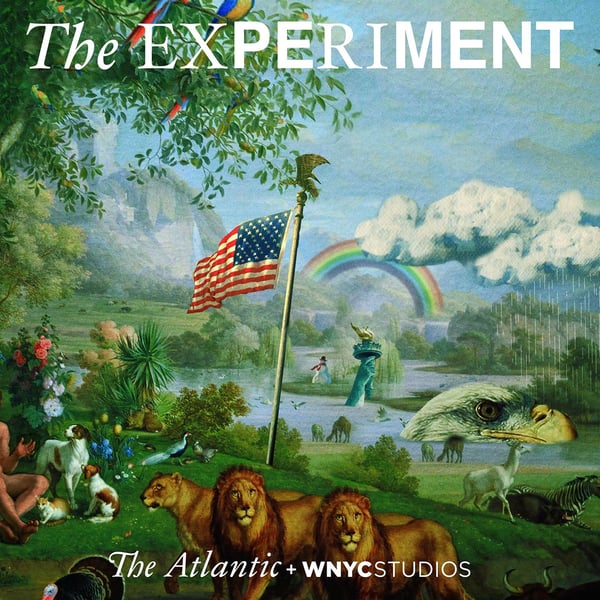The Case for Sweatpants
The Experiment
The Atlantic and WNYC Studios
4.5 • 2.8K Ratings
🗓️ 18 February 2021
⏱️ 22 minutes
🧾️ Download transcript
Summary
To mid-aughts celebrities such as Paris Hilton and Britney Spears, they were high fashion. To the likes of Jerry Seinfeld and Eva Mendes they’re a sign of defeat; they declare to the world, as Jerry tells George Costanza in the Seinfeld pilot, “I’m miserable, so I might as well be comfortable.”
And since the start of the pandemic, sweatpants have become perhaps more ubiquitous than ever.
“A lot of people who had been going to offices stopped going to offices for the foreseeable future,” Amanda Mull, a staff writer for The Atlantic, says. “I think people were forced to decide what it is they want to wear for this new circumstance they’re in.”
In this episode of the new podcast The Experiment, Mull and the host, Julia Longoria, trace sweatpants through U.S. history and debate an age-old question: Do they symbolize laziness, or freedom?
Further reading: “America’s Most Hated Garment”
Be part of The Experiment. Use the hashtag #TheExperimentPodcast, or write to us at [email protected]. Listen and subscribe: Apple Podcasts | Spotify | Stitcher | Google Podcasts
This episode was produced by Julia Longoria, Gabrielle Berbey, and Alvin Melathe, with editing by Katherine Wells. Fact-check by Stephanie Hayes. Sound design by David Herman.
Music by Ob (“Grot”), and r mccarthy (“Learning English”), water feature (“with flowers”), Laurie Bird (“Jussa Trip”), Column (“「The Art of Fun」 (Raj)”), infinite bisous (“The Past Tense”), and Nelson Bandela (“561 Mac D 10,” “011 HareDoe 019 8396,” “GLU EEE 86”), provided by Tasty Morsels and Nelson Nance. Additional audio from DigitalPimple, Glamourdaze, International Fitness Center, The Richard Simmons Show, Jane Fonda, Hudson’s Bay, Atelier ID, Breakin’ in the USA, WABC, Dance Centre, Adidas, Seinfeld, watchFashionNews, Extra, Vogue, and X17online
Transcript
Click on a timestamp to play from that location
| 0:00.0 | She's looking for a job, and she's dressed for it too. |
| 0:10.0 | Cased for lay, not expensively. |
| 0:12.0 | You know, clothing is actually the first visual impression other people have of it. |
| 0:16.0 | Some say it's a key to how do we appear to others. |
| 0:19.0 | It communicates. |
| 0:21.0 | And not only looks nice to us, there are good investments. |
| 0:26.0 | Hi Amanda, this is Julia. |
| 0:28.0 | How are you? |
| 0:29.0 | Good. |
| 0:30.0 | It's nice to meet you. |
| 0:31.0 | I'm not to be a complete creep right now, and we've never actually met in person because |
| 0:37.0 | of the pandemic, but my first question for you is, what are you wearing? |
| 0:42.0 | I am wearing a sort of a shapeless dress slash top. |
| 0:48.0 | Amanda Moll is a staff writer at the Atlantic. |
| 0:52.0 | I'm trying to explain who we are as Americans through material things, like beauty products, |
| 0:59.0 | kitchen appliances, and the clothes we wear, or don't wear. |
| 1:04.0 | There's no way to say this without a sunroof. |
| 1:06.0 | Are you wearing pants? |
| 1:08.0 | I am not wearing pants. |
| 1:10.0 | And lately, she's been spending a lot of time thinking about pants. |
| 1:15.0 | Or not pants per se, but what pants have to say about us? |
| 1:20.0 | I think that fashion is a social language. |
... |
Please login to see the full transcript.
Disclaimer: The podcast and artwork embedded on this page are from The Atlantic and WNYC Studios, and are the property of its owner and not affiliated with or endorsed by Tapesearch.
Generated transcripts are the property of The Atlantic and WNYC Studios and are distributed freely under the Fair Use doctrine. Transcripts generated by Tapesearch are not guaranteed to be accurate.
Copyright © Tapesearch 2025.

